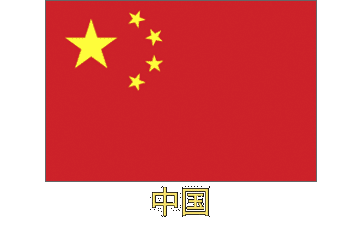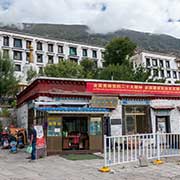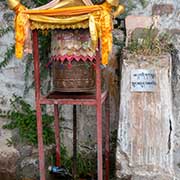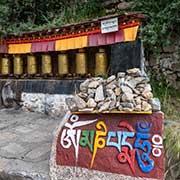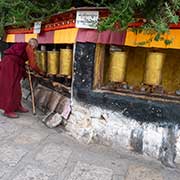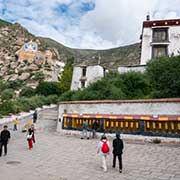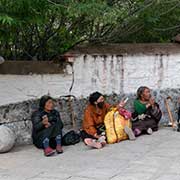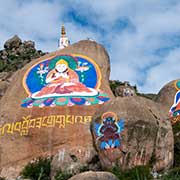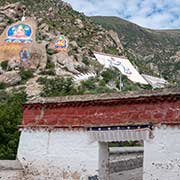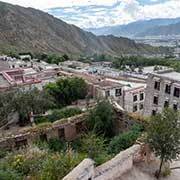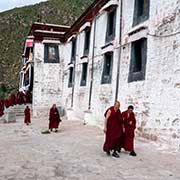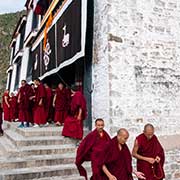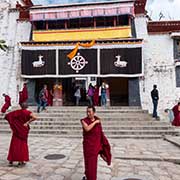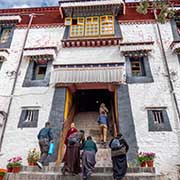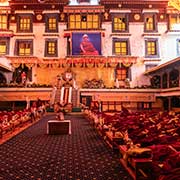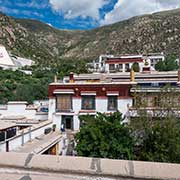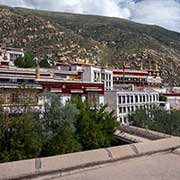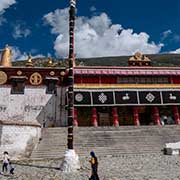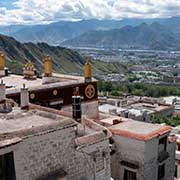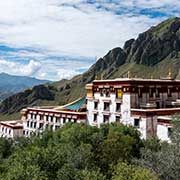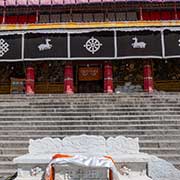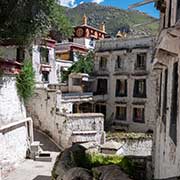Photos of Drepung Monastery, the largest Tibetan monastery, Tibet
Drepung Monastery, the largest Tibetan monastery
The Drepung Monastery (“Rice Heap Monastery”) is on the Gambo Utse mountain at the foot of Mount Gephel, five kilometres from the western suburbs of Lhasa. It was founded in 1416 by Jamyang Choge Tashi Palden and became the principal seat of the Gelugpa school of Tibetan Buddhism. Before the Potala Palace was built by the Fifth Dalai Lama, Ganden Palace, in the Monastery complex, had been the residence of the previous Dalai Lamas. Drepung is one of Tibet’s three significant Gelug university gompas (monasteries), with the Ganden and Sera Monasteries.
you may then send it as a postcard if you wish.
In the late 1930s, Drepung was divided into four colleges, each housing monks from a different locality: “one being favoured by Khampas, another by Mongolians, and so on.” Each college was presided over by an abbot whom the late 13th Dalai Lama had appointed. In the days before the Chinese occupation, between 8,000 and 10,000 monks were living in the monastery. Now, the population is about 300-500 monks: the Chinese government won’t allow more, and they are closely watched.
After the Chinese arrived in Lhasa in 1951, almost half of Drepung’s older monastic buildings were destroyed, although the chief buildings were preserved. The Chinese Communist takeover of Tibet in 1959, with the destruction of all but a dozen of Tibet’s over 6,000 monasteries, resulted in the closure of Drepung, with most of the monks being either killed or imprisoned. Approximately 250 monks escaped to India and eventually built a replica of the “Drepung Loseling in Exile” monastery on land donated by the Indian government in Karnataka State. The number of monks in the re-established Drepung Gomang Monastery has increased to more than 3,000.
During the Cultural Revolution, Drepung Monastery ceased functioning altogether, but in 1978, religious activities were allowed again. On 14 March 2008, about 300-400 monks from the Drepung monastery marched to Lhasa demanding religious freedom and the release of the Drepung monks arrested a year earlier. Monks were thrown to the ground and kicked, and up to 60 were arrested. The Chinese blocked off water, electricity, food, and health facilities in Drepung Monastery and other active monasteries in the demonstrations, including Ganden and Sera monasteries. As a consequence, monks were suffering starvation. Drepung was shut for five years and only opened again in 2013.
Drepung Monastery’s most important buildings are the Main Assembly Hall, the Ganden Palace, and a few chapels nearby. The Assembly Hall is a three-storey building with a large terrace overlooking the city of Lhasa and the valley. The main statue there is the three-floor-high Future Buddha, with statues of Shakyamuni, Tsongkhapa, and the 13th Dalai Lama. The Sho Dun Festival (Shoton or Yogurt Festival) is celebrated here, usually around the middle of August, with Tibetan operas (Lhamo) as part of the festivities.


